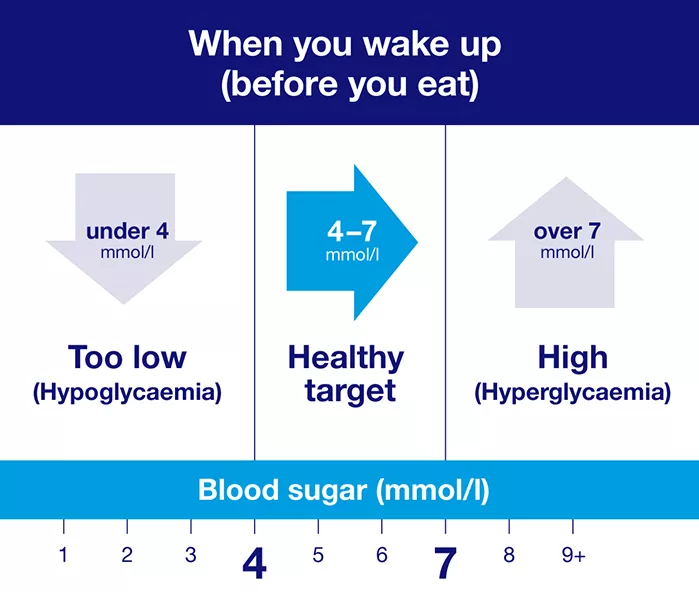Physical Address
304 North Cardinal St.
Dorchester Center, MA 02124
Physical Address
304 North Cardinal St.
Dorchester Center, MA 02124

Contents
When it comes to managing diabetes or understanding your risk for developing the condition, knowing what constitutes a normal blood sugar level is crucial. Blood sugar levels are typically measured through various tests that provide valuable insights into your health status. Let’s delve into the different tests used to determine blood sugar levels and what the results signify.
There are several tests that healthcare providers use to diagnose diabetes or prediabetes:
The A1C test measures your average blood sugar level over the past 2 to 3 months. A result below 5.7% is considered normal, while a range of 5.7% to 6.4% indicates prediabetes, and 6.5% or higher suggests diabetes.
This test measures your blood sugar after an overnight fast. A level of 99 mg/dL or lower is normal, 100 to 125 mg/dL indicates prediabetes, and 126 mg/dL or higher indicates diabetes.
During this test, your blood sugar is measured before and after consuming a glucose-containing liquid. A blood sugar level of 140 mg/dL or lower after 2 hours is normal, 140 to 199 mg/dL indicates prediabetes, and 200 mg/dL or higher suggests diabetes.
This test measures your blood sugar at any time, without the need for fasting. A result of 200 mg/dL or higher indicates diabetes.
Understanding the results of these tests is essential:
Diabetes: A diagnosis of diabetes is typically confirmed with an A1C level of 6.5% or above, fasting blood sugar of 126 mg/dL or higher, or a glucose tolerance test result of 200 mg/dL or above.
Prediabetes: Results indicating prediabetes include an A1C level between 5.7% and 6.4%, fasting blood sugar of 100 to 125 mg/dL, or a glucose tolerance test result of 140 to 199 mg/dL.
Normal: Blood sugar levels below 5.7% for A1C, 99 mg/dL or below for fasting blood sugar, and 140 mg/dL or below for the glucose tolerance test are considered normal.
Gestational diabetes, which occurs during pregnancy, is diagnosed through blood tests. The glucose screening test and glucose tolerance test are commonly used to assess blood sugar levels in pregnant individuals.
This test measures blood sugar levels 1 hour after consuming a glucose solution. A result of 140 mg/dL or lower is considered normal.
During this test, blood sugar levels are measured before and after drinking a glucose solution. Results may vary, and it’s essential to consult with your healthcare provider to interpret the findings accurately.
If you have prediabetes, taking proactive steps to prevent the onset of type 2 diabetes is crucial. Programs like the National Diabetes Prevention Program offer lifestyle change interventions that can significantly reduce the risk of developing diabetes.
For individuals diagnosed with type 1, type 2, or gestational diabetes, a comprehensive treatment plan is essential. This plan may include blood sugar monitoring, insulin therapy, oral medications, dietary modifications, and regular physical activity.
Individuals with type 1 diabetes often benefit from continuous glucose monitoring to track their blood sugar levels effectively. This technology provides real-time data that can guide treatment decisions and improve overall diabetes management.
Regardless of the type of diabetes, maintaining a healthy lifestyle through proper nutrition, regular exercise, and weight management plays a significant role in managing the condition. Working closely with healthcare providers to monitor blood sugar levels and adjust treatment plans as needed is key to long-term health.
Monitoring blood sugar levels diligently is essential to avoid complications associated with diabetes. Recognizing symptoms of high blood sugar, such as frequent urination, increased thirst, blurred vision, and fatigue, is crucial for timely intervention and management.
By understanding what constitutes a normal blood sugar level and undergoing regular screenings as recommended by healthcare providers, individuals can take proactive steps to manage diabetes effectively and lead a healthy life.